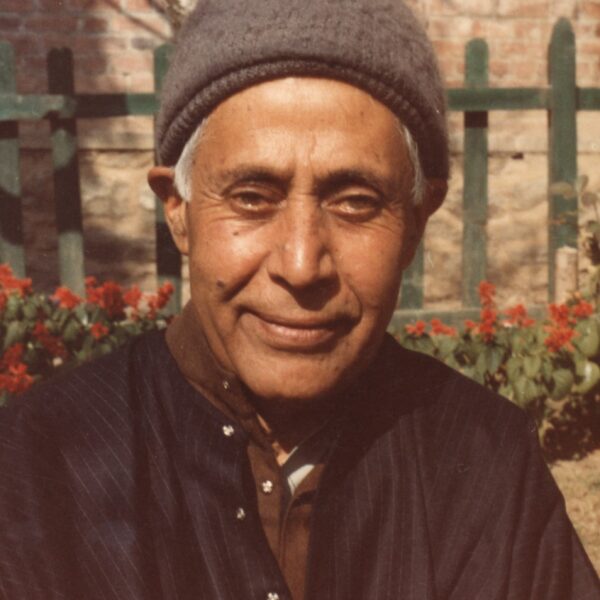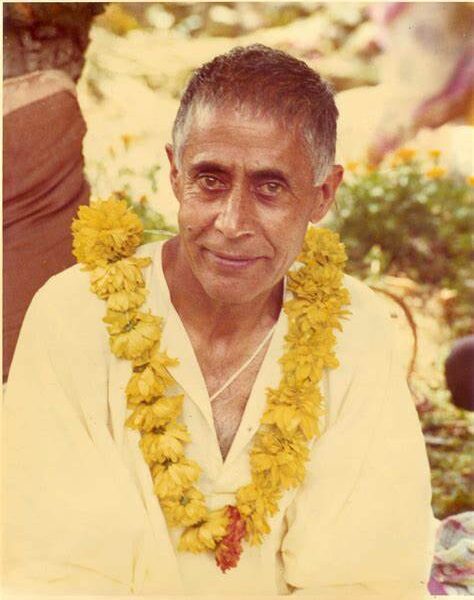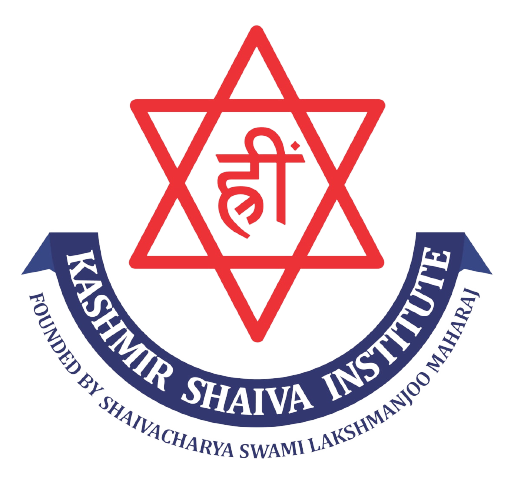SWAMI LAKSHMAN JOO
Introduction
Swami Lakhmanjoo was the latest and the greatest saints and masters of the tradition of Kashmir shavisim , in the glorious unbroken Guru Shishya lineage of the great Abhinavagupta . He was like a rare and a splendid jewel, having a profound and deep understanding of the philosophy and practises of Kashmir Shaivism . He not only commanded immense understanding and knowledge of the philosophy but also had a deep understanding and experience of its practises
Born in an affluent and influential family in Kashmir in the year 1907, he exhibited intense signs of spirituality and deep intellectual prowess right from early childhood that confirmed the prediction made by his Param GuruSwami Ram ji Maharaj at his birth –“There is now light in this darkness”. As a young boy he approached his spiritual practice with burning zeal and had his first glimpse of God Consciousness at the age of nineteen. After that glimpse of the Divine he took a vow of lifelong celibacy and dedication to the realization of the highest state of God Consciousness. During the next three decades Swami Lakshmanjoo soaked himself in the oceanic depths of Kashmir Shaiva philosophy, at every step verifying his intellectual understanding with his own personal experience.
Swami Lakhsmanjoo’s grand master (param Guru was the great Swami Ram ji maharaj.. It may not be out of place to mention that the sole credit for revival of the Kashmir Shaivism should be bestowed on Shri Swami Ram ji for he influenced the then Maharaja of Kashmir- Pratap Singh to re-publish and assimilate all publications and scriptures that were still intact and safe after the long dark era of Islamic invasion in Kashmir. On achieving Niravana, Swami Ram ji handed the young shishya into the teutelage of one of his chief disciples- Swami Mahtab Kak .
Swamiji’s contribution to the promotion of the studies in Kashmir Saivism, propagation of the Trika philosophy and growth of Kashmiri culture will be remembered as long as the Sun shines. Swamiji’s effort considerably helped the revival of this philosophy and way of life, which had otherwise been fading away. Innumerable scholars from India and abroad came to Swamiji for studying and learning Kashmir Shaivism.
Among them were the illustrious Lilian Silburn and her colleague Andre Padoux, highly revered Scholars of Tantrism in Paris who published several Saiva texts after studying with Swami lakshmanjoo for over 20 years. Alexis Sanderson, a renowned professor at Oxford, who studied with Swami Lakshman Joo for many years from went on to revolutionise the history of Śaivism in South Asia. Mark S.G. Dyczkowski, a well known scholar of Shaivism , Paul Reps who wrote the world best seller classic -Zen Flesh Zen Bones inspired by Swami Jis teachings. Rameshwar Jha , who wnt on to write an original Sanskrit text titled Pūrṇatāpratyabhijñā explaining the philosophical tenets of Śaivism . Bettina Bäumer and various other notable scholars who made further critical contribution to the study of non-dual Śaivism such as Shri K.C. Pandey, Baljinath Pandit, Raniero Gnoli , Prof Navjivan Rastogi and Mr Raffaele and Thakur Jaidev Singh .
Mahrarshi Mahesh yogi, Swami Muktananda and many other world renowned saints visited Swami Lakhamnjoo in Kashmir to explore the deeper depths of the mystical philosophy of Kashmir Shaivisim
Pandit Rameshwar Jha composed the famous “Gurustuti”, a compendium of verses in Sanskrit on the greatness of Swami Lakshmanjoo and his masters, where he referes to swami lakhsmanjoo as the reincarnation of the great Lakhsamngupta. Among the many devotees from Western world, John Hughes and Denise Hughes , diligently recorded and published many of his commentaries and teachings for the benefit of future generations. The list is endless.
Swami Ji also wrote many books for the benefit of seekers on the path of the teachings of Kashmir Shaiva Philosophy . Among them his book, Kashmir Shaivism: the Secret Supreme, , presents a systematic unfolding of the Tantric teachings of the ancient tradition of Kashmir Shaivism. This profound tradition, long enshrouded in secrecy, is so rich and detailed in its descriptions of what it reveals as the ascent of individual consciousness to universal God Consciousness that it has been characterized as ‘a mystical geography of awareness’ Swami Ji achieved maha Samadhi in the year 1991.



